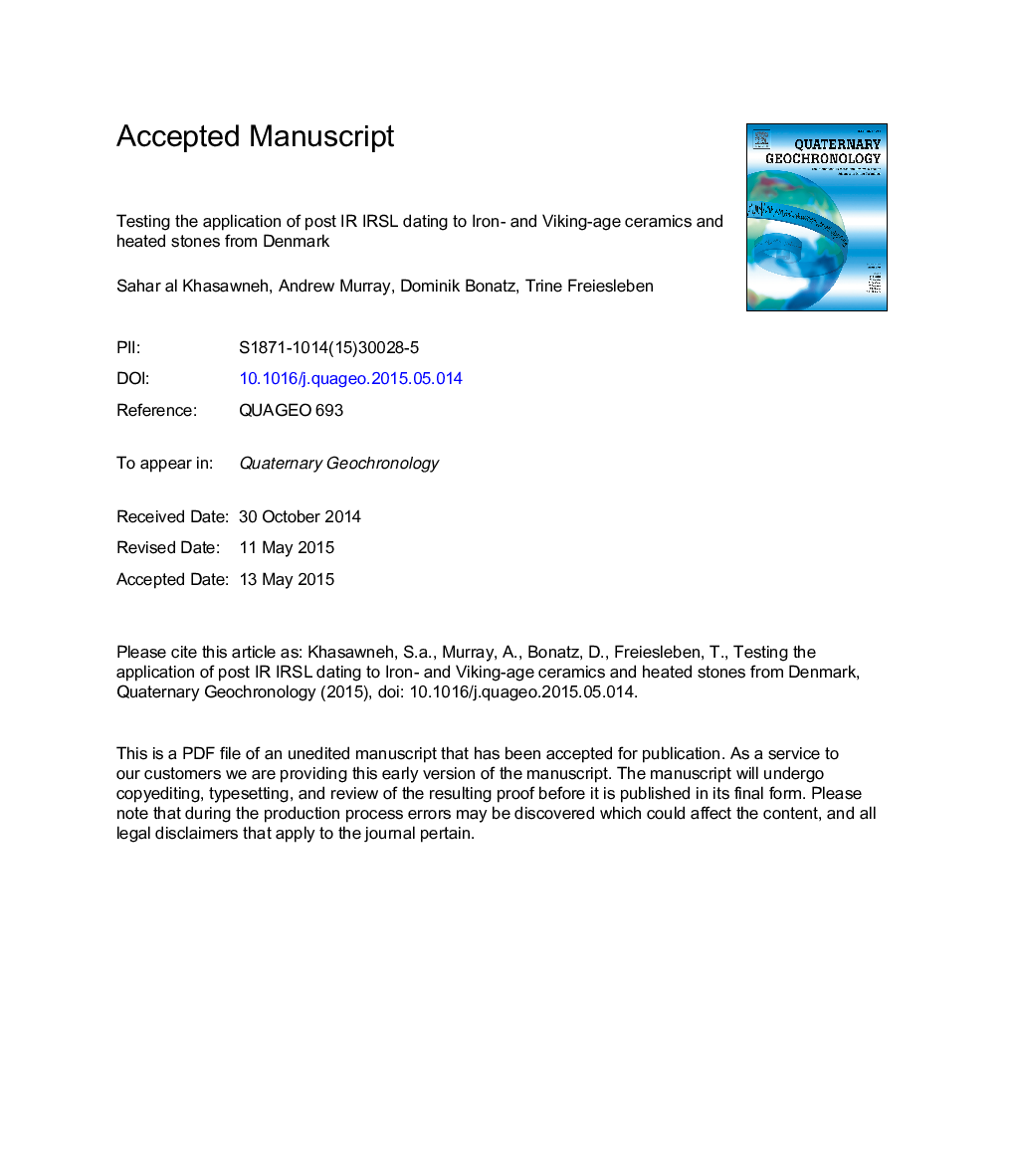| Article ID | Journal | Published Year | Pages | File Type |
|---|---|---|---|---|
| 6442597 | Quaternary Geochronology | 2015 | 32 Pages |
Abstract
We first derive quartz OSL ages for these samples, to support the archaeological age control. The luminescence characteristics of the pIRIR290 signal are then investigated; in particular the dose recovery ratios are shown to be close to unity. The performance of the feldspar pIRIR290 protocol is then examined by comparing the pIRIR290 ages with those based on the quartz OSL signal; the average ratio of pIRIR290 to OSL ages is 1.14 ± 0.05 (n = 14) and there is some suggestion that the possible overestimation of the feldspar ages compared to quartz is only of significance for the heated stone samples. Nevertheless, there is no indication of incomplete heating of the stones; the ratios of De derived from the IR50 and pIRIR290 signals are independent of sample type, and consistent with complete resetting by heating. Comparison with the archaeological age control is not able to identify whether quartz or feldspar provides the most reliable dating signal.
Keywords
Related Topics
Physical Sciences and Engineering
Earth and Planetary Sciences
Geochemistry and Petrology
Authors
Sahar al Khasawneh, Andrew Murray, Dominik Bonatz, Trine Freiesleben,
